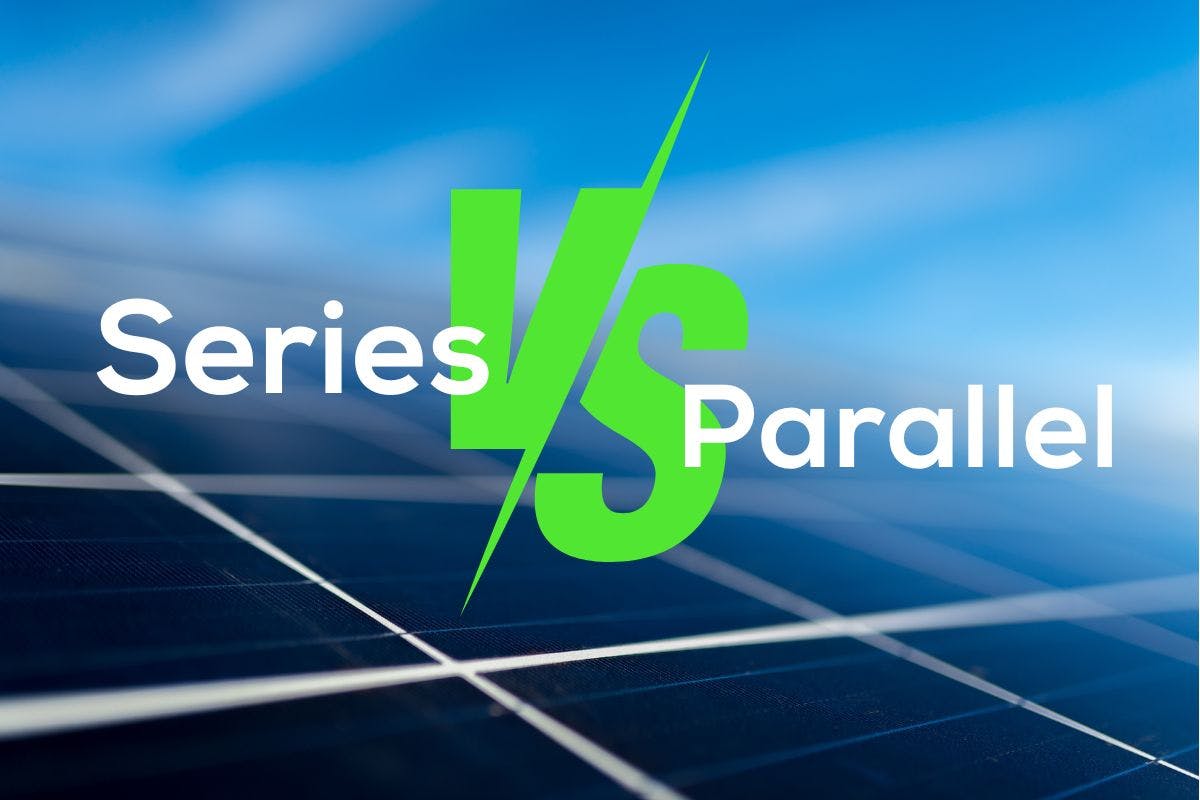Series vs. Parallel Solar Panel Wiring: What to Know and When to Care
Last edited

Author
Brian Church
Writer

Editor
Cory O'Brien
Senior Director - Growth Marketing

While figuring out if solar panels will be a good decision for your home, you may want to dive deep into the world of electrical engineering. If so, that’s quite commendable. For the rest of us, fortunately, you do not need to learn a great deal about series vs. parallel wiring and circuits to choose home solar.
Series wiring and parallel wiring are important factors, preferably for a professional to handle, in a solar system installation process. If you want to learn more, we’ll go into the whys, pros, and cons of series vs. parallel solar panel wiring.
See how much you can save by going solar with Palmetto
Understanding Series and Parallel Circuits
Without getting too far into the weeds, technically speaking, the distinction between series and parallel solar panels is based on the differences between series and parallel circuits.
To quickly understand the difference between series and parallel circuits, consider a string of holiday lights. If one bulb along the string of lights goes out, the result is much different depending on whether the lights are wired in series or parallel.
If the lights are wired in a series, one bulb’s outage probably causes the rest of the lights on the string to go out. For this reason, most modern holiday decorations are wired in a parallel circuit so one outage will not cause the rest of the lights on the string to go dark.
Solar panels in series or parallel
A bit more complicated than holiday lights, but based on the same set of principles, solar panels can also be wired in a series or parallel circuit.
While each circuit type has pros and cons (which we’ll detail later), the goal of both series and parallel solar wiring is to allow the electricity generated by your solar panels to be sent to the rest of your energy system and ultimately into your home.
- Series solar panel wiring: In a series, solar panels are more or less wired together in a chain, like a set of train cars connected together on a single track. Wiring solar panels in a series is like setting up a line of dominos designed to work together in one specific direction. However, this comes with the risk of potential stoppages if one component is not adequately performing its function.
- Parallel solar panel wiring: Parallel, meaning “side by side,” solar wiring is more like multiple train cars running on separate tracks, in which one car’s speed will not affect another. Likewise, suppose your home’s electricity supply is a river. In that case, parallel wiring is a bit like adding a new tributary with every solar panel rather than trying to send more water down the same channel.
Which is Better: Series or Parallel Solar Panels?
In reality, there is no “better way” to connect solar panels, as both series and parallel connections have different effects, which come with benefits and drawbacks. At a high level, here is an introductory look at the pros and cons of series vs. parallel.
| Effect | Pros | Cons | |
|---|---|---|---|
| Series | Each additional panel increases system voltage; amperage remains the same | Lower wiring and equipment costs, easiest to set up in a DIY installation | Shaded or broken panels affect the performance of neighboring panels |
| Parallel | Each additional panel increases system amperage; voltage remains the same | Improved reliability with independently operating solar panels | Increased wiring and equipment costs |
While series wiring is the simpler and less expensive way to connect solar panels, solar panels wired in parallel can help prevent potential adverse chain reactions from underperforming panels.
In the same vein, series connections are ideal for chains of panels (also known as solar arrays) that all constantly deliver roughly the same amount of solar power output at any given moment. In contrast, parallel connections are better when your panels generate different amounts of electricity.
As such, series connections work best for panels installed on the same roof face with full sunlight exposure, and parallel circuits are better for panels that are partially shaded throughout the day or on surfaces facing different directions.
Learn more: Are solar panels suitable for your roof?
See how much you can save by going solar with Palmetto
Are residential solar panels wired in series or parallel?
Typically, most home solar panel systems are wired with a combination of series connections and parallel connections.
While there are pros and cons of utilizing exclusively series or parallel wiring in small, DIY solar energy systems, whole home systems often need both types of connections to achieve the critical balance of voltage and amperage necessary to efficiently produce solar power and send it through your inverter system.
Note: To maximize each solar panel’s individual production, solar energy systems that use microinverters are always wired in a parallel connection.
Solar Panel Wiring: Series vs. Parallel
In summary, choosing between series and parallel wiring for your home solar panels is a decision that should ultimately be made by a professional based on the unique characteristics of your property, your needs, and the components in your renewable energy system.
While it never hurts to have a breadth of technical knowledge in your back pocket while looking at your solar options, series vs. parallel wiring is another step of the solar installation process best achieved when an expert can develop a solution specifically for your home.
For questions about your home’s solar potential, speak with a Palmetto solar advisor today or discover your savings by designing your solar energy system.
Frequently Asked Questions
Does series or parallel wiring matter for solar panels?
Yes. From a technical, electrical engineering, perspective, and what your installer should do based on your home and your specific needs, yes. For how your home solar system works, having the right wiring is critically important.
Do you, as a solar system owner and user, need to know the ins and outs of series and parallel wiring? No.
What are the advantages of series wiring solar panels?
Series wiring is a less expensive way to connect solar panels. Series wiring works most efficiently with panels on the same roof, facing the same direction with full-sun exposure. Most residential solar panel systems use a combination of series and parallel wiring.
What are the advantages of parallel wiring solar panels?
Solar panels with parallel wiring have better reliability as each panel is effectively performing independently. Parallel panels work best in systems where panels produce different amounts of electricity, regularly have different sunlight conditions, or face different directions.


